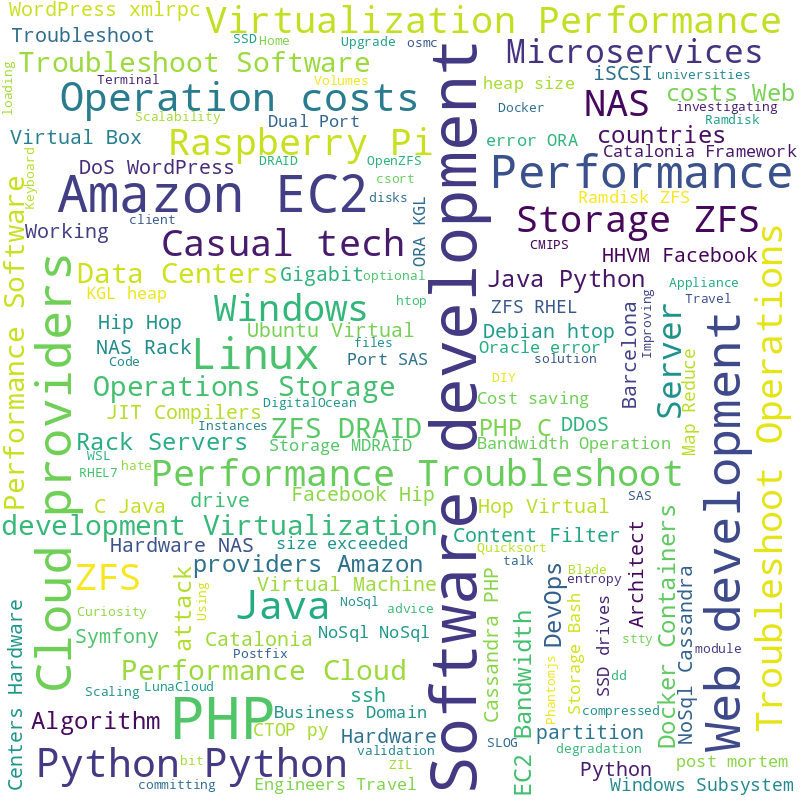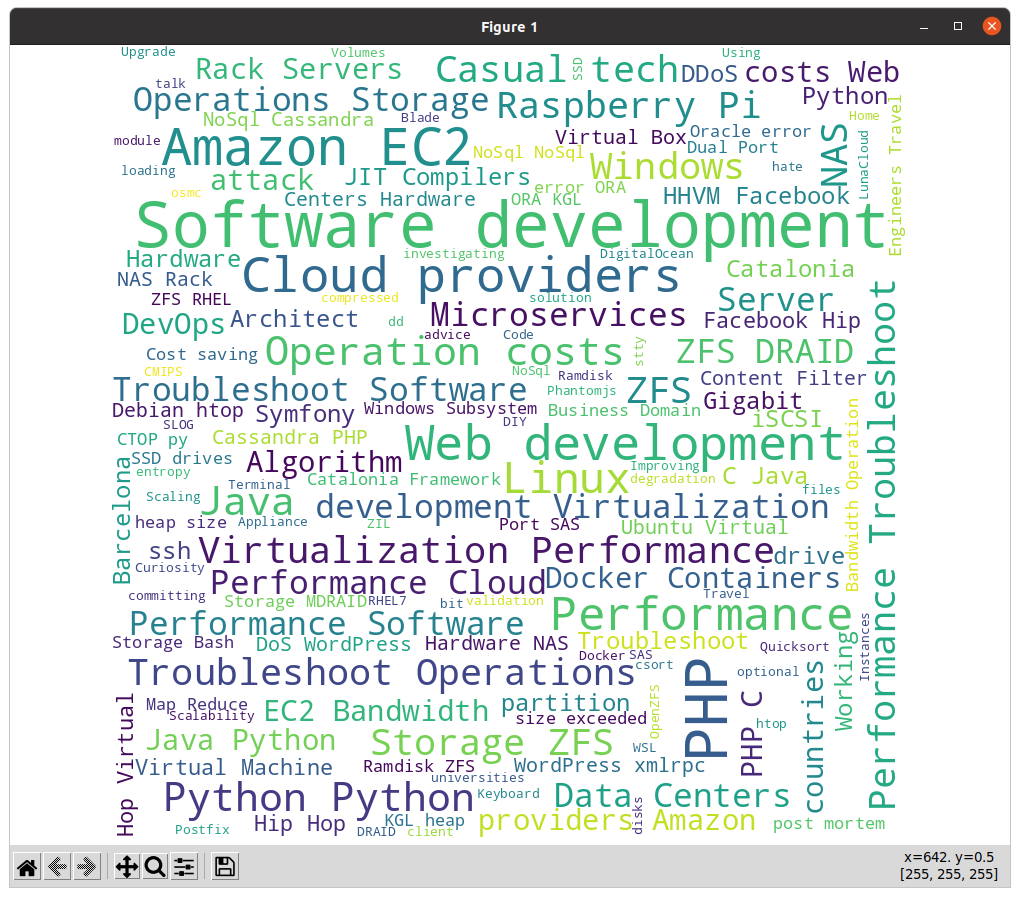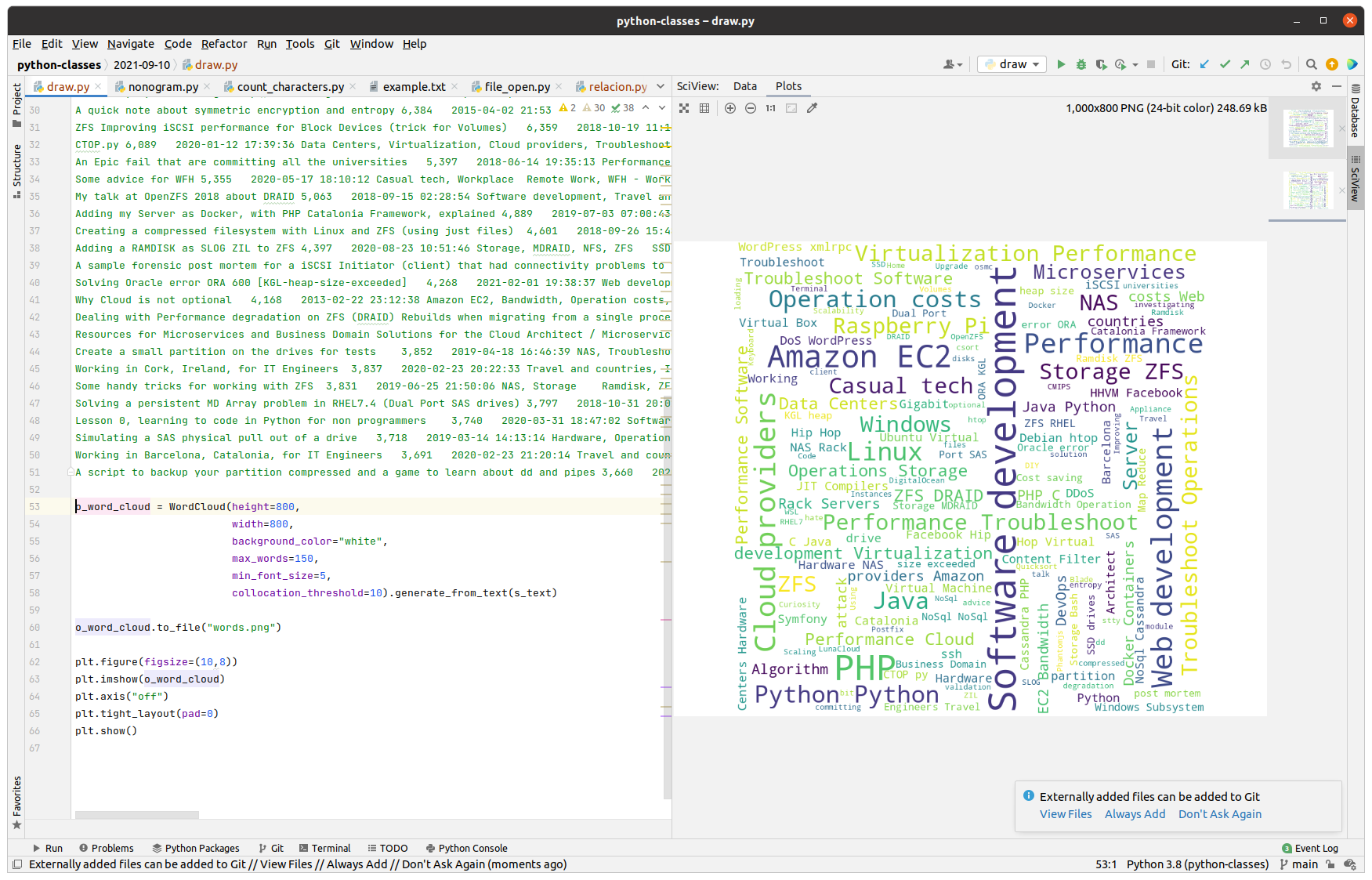This is a very simple code but generates very cool Word Cloud result in PNG format.

from wordcloud import WordCloud
# Add your tags in here separated by commas and as many times as they appear
s_text = "Python, Software development, PHP, Cloud providers, Python, Python, Software development, Scaling"
o_word_cloud = WordCloud(height=800,
width=800,
background_color="white",
max_words=150,
min_font_size=5,
collocation_threshold=10).generate_from_text(s_text)
o_word_cloud.to_file("words.png")That version generated the image .PNG file.
If you want to display this in mathlib or inside PyCharm embedded view, you can install matplotlib with:
pip3 install matplotlib
Then with this code you can display a matplotlib viewer:
import matplotlib.pyplot as plt
from wordcloud import WordCloud
if __name__ == "__main__":
# Add your tags in here separated by commas and as many times as they appear
s_text = "Python, Software development, PHP, Cloud providers, Python, Python, Software development, Scaling"
o_word_cloud = WordCloud(height=800,
width=800,
background_color="white",
max_words=150,
min_font_size=5,
collocation_threshold=10).generate_from_text(s_text)
plt.figure(figsize=(10,8))
plt.imshow(o_word_cloud)
plt.axis("off")
plt.tight_layout(pad=0)
plt.show()

